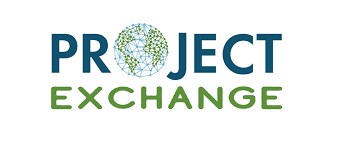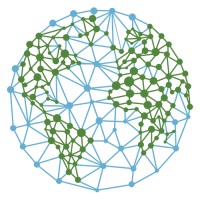
Caption: Project Exchange is a global organization that hosts multiple programs that aim to increase cultural understanding and promote youth-led work to solve the world’s biggest issues, starting in their own communities. Image courtesy of Project Exchange.
Studying abroad is a distant dream for many high school students, even if they are eager to participate in a cross-cultural learning experience. For Ashley Lin, though, three weeks in Uruguay as a U.S. Department of State Youth Ambassador was a wake-up call to the necessity of cross-cultural exchange in the modern world.
Lin learned and lived the culture of Uruguay during her three weeks there, which opened her eyes to the benefits of cross-cultural understanding. However, she recognized that the number of high school students who travel and stay in another country is a very small fraction of the teens who are interested in cultural exchange, not to mention the total population of high schoolers on Earth. There are multiple obstacles to participating in a study abroad program, even if you’re interested: knowing they exist, researching them, applying for them, and paying thousands of dollars in fees if accepted.
Only about 20% of all U.S. students were taking a foreign language course in 2017, according to the American Councils for International Education. The median percentage of students learning a foreign language in European countries in 2016 was 92% and 100% in France, Norway, Romania, and some other small European nations, according to Eurostat. Part of the reason for this difference is that most European countries have national requirements for elementary, middle, and high school students, but individual school districts set those graduation rules in the U.S. Study abroad programs in American colleges do not come anywhere close to balancing this international education disparity. While 347,099 American college students studied abroad in the 2018-19 school year, 872,214 international students — over 2½ times as many — were enrolled in U.S. colleges in the same year, according to the Institute of International Education’s Open Doors report.
Many high school students lack the financial means to register for a costly international trip that includes airfare, hotel costs (unless staying with a host family), food expenses, travel insurance, transportation within the foreign country, and spending on souvenirs, among other fees. Some students simply do not want to stay in a country where most citizens may speak a different language, eat different breakfast foods, and celebrate different holidays, or feel that it would be too difficult to live there.

Caption: Current college student Ashley Lin founded Project Exchange in the summer of 2018 after studying abroad in Uruguay. Her goal was to make cross-cultural discussion and collaboration more accessible to high school students. Image courtesy of Ashley Lin.
Lin wanted to change this by making cultural exchange and discourse a possibility for all teens (with a working device and reliable WiFi), both in the U.S. and around the world. In July 2018, Lin founded Project Exchange to provide an accessible, digital way to “study abroad” during the summer. Project Exchange is now an international nonprofit that has helped over 300 students from more than 30 countries connect, discuss cultural similarities and differences, and work on global issues together.
The Digital Exchange Program (DEP) is Project Exchange’s primary method of achieving its mission “to bring together high school and college students from around the globe to talk about culture, promote mutual understanding, and prepare young individuals to tackle critical global issues through cross-cultural communication”. Each week for three months, students participate in video calls with their DEP partner, a student from a different country, as well as lessons and activities on the United Nations’s Sustainable Development Goals and how to create community initiatives that promote cultural understanding. For those who prefer messaging or can’t do international calls, Project Exchange recently created DEP Text, where partners communicate solely through text messages over a four week period. Alumni of the DEP or any other study abroad program can also apply to the Impact Incubator, which focuses on teaching middle and high schoolers the skills they need to implement a local cultural exchange initiative over eight weeks, from fundraising to social media strategies. Project Exchange created this opportunity in response to DEP alumni with novel ideas for community-based cultural exchange programs who lacked some of the skills and financial resources they needed to put their plans into action.
Participants from multiple rounds, or cohorts, of the DEP, DEP Text, and the Impact Incubator have said that they learned a lot about other cultures and how to lead improvements in multicultural awareness and acceptance through Project Exchange’s programs, in addition to improving their leadership and communication skills and making a friend thousands of miles away. As physical travel becomes more difficult due to rising diplomatic tensions and a global pandemic, Project Exchange’s vision of a digitally interconnected and understanding world is more relevant and impactful than ever.
